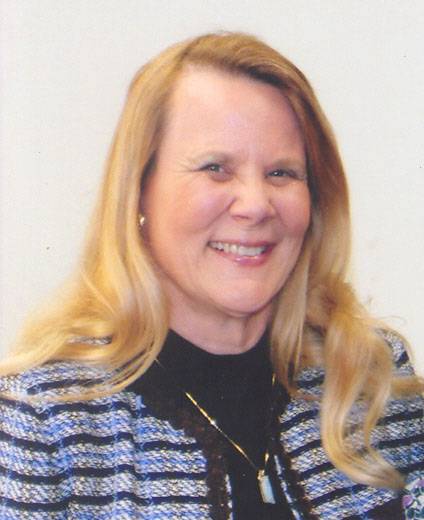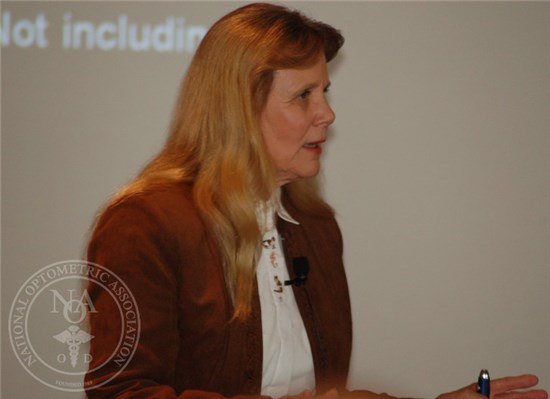By Pamela Miller, OD, FAAO, JD, FNAP

August 17, 2016
SYNOPSIS
Local speaking engagements can establish your credentials, introduce you to prospective patients, and promote the services you provide. Learn how to effectively leverage this prime marketing tool.
ACTION POINTS
LOOK FOR OPPORTUNITIES. School career days and presentations to school nurses and teachers, and presentations to local clubs like Kiwanis and the Lion’s Club, are often available.
KEEP IT POSITIVE. Don’t turn off your audience by speakingillof other healthcare providers, or venting on healthcare reform, vendors or optical companies.
DON’T DIAGNOSE. Never offer a diagnosis, or address an individual’s specific issues, without having first personally examined them. Speak in general terms about conditions and the treatments and technology available that sometimes help.
Speaking engagements in your community can let prospective patients know of your services, while doing the good deed of educating people of their eye health and visual needs. Think carefully first about what you say, and how you respond to your audiences’ questions. The wrong presentation, or responding irresponsibly, could damage your reputation, or even cause harm to a person who needs medical attention.
I generally speak in my community about once a month, most recently to a local elementary school (grades K -5) for their annual invitation to local professionals to present information about their profession. I spoke about being an optometrist, the importance of wearing their glasses, parts of the eye and diseases an optometrist can see when looking in the eye. My speaking engagements almost always involve a lot of Q&A. I encourage questions, and I will often ask some basics to get the discussion going, such as how old you have to be to wear contact lenses, and whether anyone experiences headaches after working on their computer, or after reading. My interactions with local audiences give me a great opportunity to get to know my community and prospective patients better, to educate the public about the importance of our profession, and how people can best safeguard their vision and eye health.

Dr. Miller addressing the National Optometric Association. Dr. Miller, who also regularly addresses her community in Highland, Calif., says speaking engagements in your community do a service for people educating them on their eye health and vision needs, and also helps establish you as a local healthcare provider.
Increase Awareness of Your Practice
When you’re starting out in practice, and just starting to get known in the community, that’s a good time to start going out to speak to local community groups, like the Kiwanis or Lion’s Club, or a local school. It’s a good way to enhance your reputation and meet new people.
I find that every time I speak, I get at least one new patient,which often translates into their family and friends, too. That said, if you are doing the speaking engagements just to add new patients to your practice you will be disappointed. Your first goal should be to educate the public, to promote good eye health and to inform the public about what you and other ODs do.
Opportunities to speak are sometimes easy to find. For instance, most elementary schools have a career day. You could contact the schools in your area, and offer to do a presentation, or maybe even a few for different grade levels. Doing so enables you to make a connection with the school administrators, and maybe the nurse, who can then refer patients to you in the future, and you are introducing yourself to the children themselves, who may then talk about you to their parents, letting them know about the nice eye doctor who visited their classroom, who they wouldn’t mind seeing for their next eye doctor’s appointment.
My best source for speaking engagements depends on the audience. Within the profession, it is always direct contact with an organization, or after I have submitted lecture proposals. Outside the profession, it almost always originates with a patient making the initial contact. Sometimes, it is for an in-service event at the patient’s institution or company, sometimes for their local community group, the Chamber of Commerce or a school.
When speaking to children, tailor your presentation to the grade level. And keep in mind the brevity of the time you may be offered. You may only have 10 or 15 minutes with each grade. For the youngest children, just explaining what an eye doctor is and why they should wear their glasses may be enough, but the older children in the fourth and fifth grades may already be interested in becoming eye doctors themselves, and may even ask you about the educational requirements and schooling you need.
In addition to a brief meeting with the school nurse, you also can organize a separate speaking event, perhaps in your own office, for school nurses in which you explain what you do, versus what ophthalmologists do, and what you can offer their students. The Optometric Extension Program has a brochure for educators that you can pass along to school nurses and teachers.
Always follow-up presentations with a thank-you card to the person who organized it for you, and to any teachers whose classes you presented to, along with your business card.
Keep it Positive
When you begin preparing your presentation, keep in mind that you want to focus on the information and guidance you can pass along, rather than on negative commentary about other healthcare providers or healthcare organizations. The last thing you want is for the presentation to become a venting session about your anger regarding health care reform, a vendor, or worse yet, a competing OD or optical company.
In fact, speaking ill of another organization or healthcare provider could even lead to legal trouble if your critique spreads throughout the town. You could be sued for defamation by saying negative things that can’t be proven true about other doctors or companies.
Don’t Diagnose
Let’s say a person in the audience raises their hand and describes an eye discomfort they’ve been experiencing, or the worsening macular degeneration of their father-in-law. You think you know what the problem is, or what the person should do, but restrain yourself from making a diagnosis from the dais. It is best to simply advise the person to make an appointment with their eye doctor, who can examine them, and then make a diagnosis. It’s OK to dispense general information about a disease like macular degeneration, including what an OD can do to help monitor the condition, but don’t speak in terms of any particular individual’s experience with the disease. You might say: “I would suggest you make an appointment with your eye doctor, or if you don’t have an eye doctor, my practice would be happy to help. You can pick up one of my business cards after the presentation. There is new technology and medication that might be able to help your father-in-law, and I would also suggest that he see an eyecare practitioner who specializes in low vision, as my practice does.”
Be careful not to make statements about eye diseases like: “everyone can be helped.”
You always want to err on the side of caution since you don’t have the patient’s information and history, and haven’t done an examination. You don’t want to make an ill-informed diagnosis on the spot, and end up interfering with, or even maligning, another doctor’s work. On the other hand, you also don’t want to be dismissive, and say, “oh, that’s just a minor eye irritation, nothing to worry about,” because you don’t want the person to decide, based on the opinion of a doctor who hasn’t conducted an exam, to refrain from seeking care.
You also can avoid diagnosing by using questions about specific people’s eye conditions to start a general conversation about an eye condition. For example, if an audience member says their mother is losing her vision from cataracts, you might say: “Let’s talk about cataracts. Most of us, as we get older, develop them. When the cataracts get to the point where they are interfering with your vision, it is time to talk to your eye doctor about the possibility of having them removed. An optometry practice, like mine, can co-manage cataract care with eye surgeons, who perform the surgery, sending you back to our office for care after the procedure.”
Make it a Show-and-Tell
Holding the interest of your audience is easier if you have something more than your words, or worse yet, a deadly boring PowerPoint presentation, to show them. For example, for years I would bring a picture of the famous Renshaw Cow to show audiences to illustrate the difference between sight and vision. When you first look at the photo, which is in black and white, it’s hard to tell what it is. Some audience members who look closely will be able to see that it’s a cow looking over her shoulder. The exercise in looking to recognize, rather than just looking to see, makes it easier for the audience to understand the value of the power of vision, in which your eyes work with your brain to recognize, rather than just see.
I also would sometimes bring in prosthetic eyes, which make it easier to describe the anatomy of the eye, and the parts of the eye that the OD can monitor, treat and prescribe solutions for. Other ideas for good show-and-tell items are polarized lenses, sports lenses with different tints, prism lenses, Transitions lenses or computer lenses, which the audience can pass around to try on to understand the value of the products you, and other ODs, prescribe.
Employed ODs: Get Permission from Boss
If you are an associate OD, it is best to ask your boss, the practice owner, if it’s OK if you speak to community organizations. A smart practice owner will be open to having you do this because, in addition to giving you a chance for greater professional development, it gets the word out about the practice. Some might even be open to having you occasionally take time off during the work day to give presentations. However, some practice owners don’t see the value of you speaking publicly. To make your case, explain you would like to speak to help grow the practice, and to do the good deed of educating the community about how they can best preserve their eye health and vision.
Pamela Miller, OD, FAAO, JD, FNAP, has a solo optometric practice in Highland, Calif. She has a law degree, holds a therapeutic license, is California State Board-certified and glaucoma-certified to prescribe eye medications, and offers comprehensive vision care, contact lenses, visual therapy and low vision services. To contact her: drpam@omnivision.com.



























